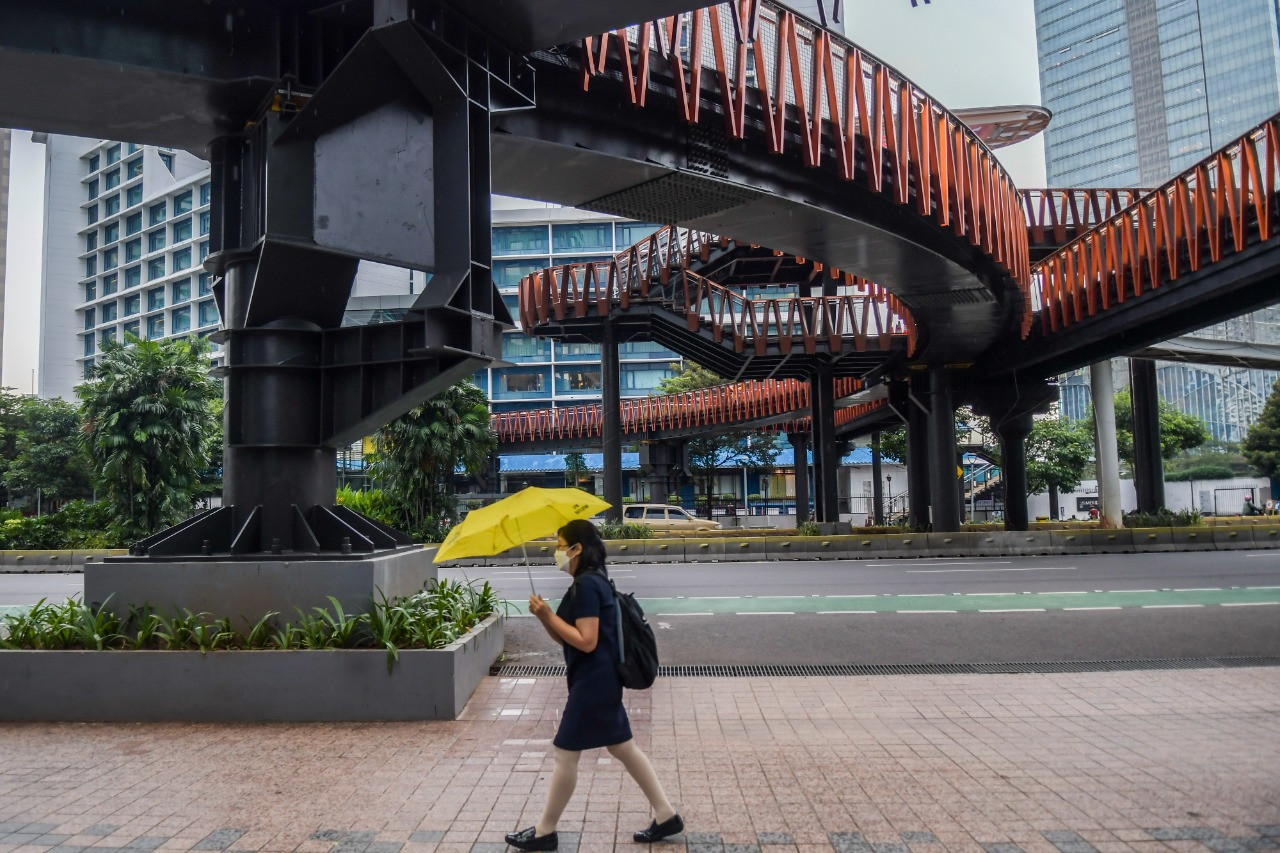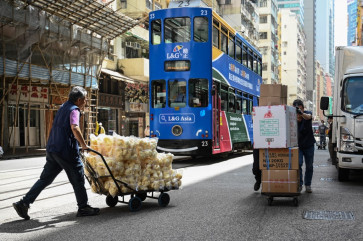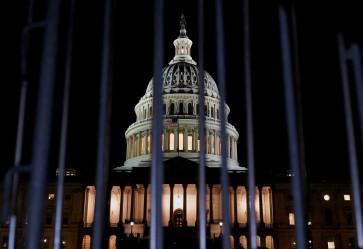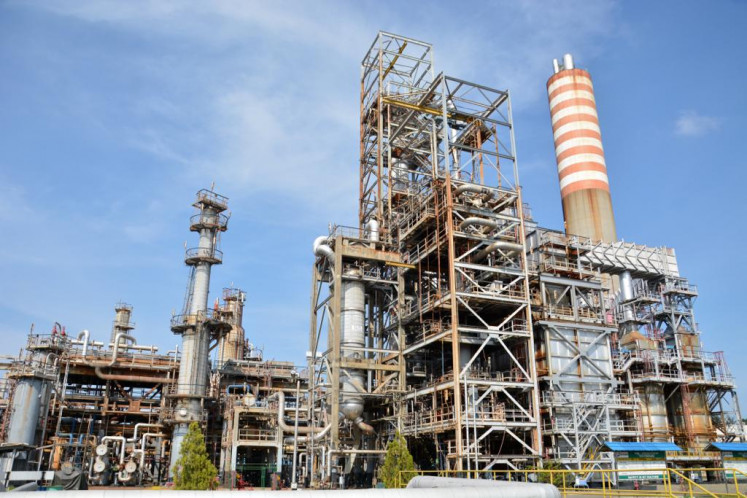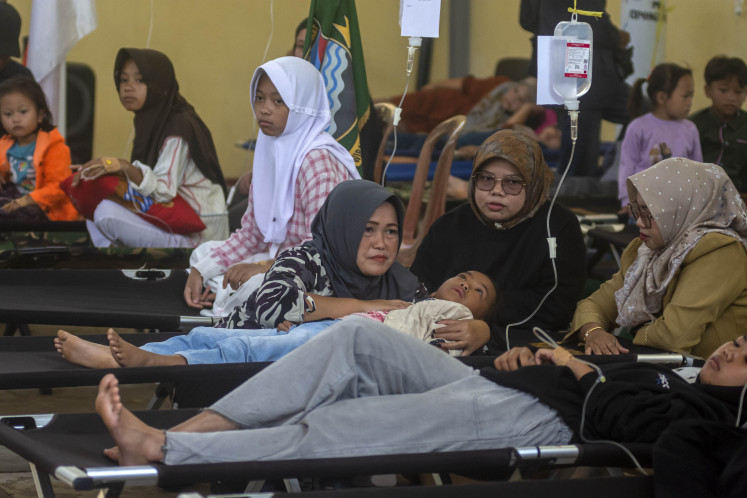Popular Reads
Top Results
Can't find what you're looking for?
View all search resultsPopular Reads
Top Results
Can't find what you're looking for?
View all search resultsPedestrian bridge: Accessories over necessities
A large number of pedestrian bridges in a city can indicate that a city favors motorized vehicles over pedestrians and signals poor walkability.
Change text size
Gift Premium Articles
to Anyone
T
he Jakarta government will soon open a new pedestrian bridge in Karet Sudirman over the city’s thoroughfare Jl. Sudirman. The bridge will also serve as a bicycle crossing and a viewpoint facing two Karet overpasses that could be a perfect spot for selfies and your latest Instagram post.
In addition, it will be an outdoor gallery to commemorate frontline health workers who have died of COVID-19. Finally, the bridge will have colorful and "artistic" lighting fixtures to enhance the capital city's beauty.
It will be the latest addition to the "instagramable pedestrian bridge" collection that share similar features: so-called iconic architecture, colorful material, over-the-top lighting and sometimes no roof.
The city government's social media account claimed the bridge would pamper pedestrians, even though they have to walk up 80 steps or an 150-meter ramp since the elevator only operates on specific hours and days.
During the construction of the bridge, the city government is operating a temporary pelican crossing that connects the two sides of Karet Sudirman and the Transjakarta bus stop.
Many cyclists, including me, use the pelican crossing routinely and gratefully. Thanks to the facility, I don't have to walk my 15-kilogram bicycle on the ramp of Benhil bridge when I need to cross Jl. Sudirman and feel sorry for other fellow pedestrians when I meet them on the ramp.
The pelican crossing has already provided a quick and easy way for pedestrians to cross and access the Transjakarta service. The Karet Sudirman pelican crossing emulates the success of its predecessors near the Hotel Indonesia traffic circle and Tosari crossing, both on Jl. Thamrin. The only downside is that some car and motorcycle drivers do not stop when the light turns red, either because they are ignorant or the traffic lights are not visible enough.
When the Karet bridge is operational, however, the Karet Sudirman pelican crossing will be removed.
The city road agency head said the facility would be closed to allow the traffic to return to normal. He said pedestrians were the cause of abnormal traffic, although Jl. Sudirman was known for heavy traffic jams even before the pelican crossing was built. In fact, Jl. Sudirman and Jl. Thamrin have already lost their role as arterial roads because there is a car entrance every 20-30 meters along the thoroughfares.
Pedestrian bridges are an example of modern urbanism in the early 19th century. The hallmark of Modernism is single spatial zoning, separating the functions of space such as housing, work and recreation in a rigid manner. And to facilitate movement between these particular districts, streets changed functions.
Previously, urban streets were multifunctional – for pedestrians, vehicles and the sidewalk could be a place for children to play and socialize. For modernists, intersections and crossroads often create obstacles to the rapid flow of traffic. As the retainer of Modernism, Le Corbusier, put it, "Speed lies on this side of mere dreams: it is a brutal necessity". Streets become conduits for cars and not people.
The primary purpose of pedestrian bridges in urban centers is to protect pedestrians from vehicular traffic, as the city road agency has stated, especially when certain city agencies are still using driving speed as a key performance indicator. In the end, the bridges are not a pedestrian privilege but a facility for motorized vehicles to speed undisturbed.
Pedestrian bridges also make drivers feel they have exclusive access to the road. Therefore, drivers tend to be unaware of the presence of pedestrians. A large number of such bridges in a city can indicate that a city favors motorized vehicles over pedestrians and signals poor walkability.
So no, the new instagrammable bridge is never a facility for pedestrians, nor will it pamper pedestrians. Instead, it will indulge the social media content makers who need to walk there.
The new bridge may delight and satisfy those who seek new visual experiences in the city. Perhaps it will improve the skills of amateur photographers.
But never say the facility is for pedestrians. It is just another walking attraction.
For over two decades, Jakarta has seen the number of pedestrians decline, despite the rise of public transportation coverage and some sidewalk improvement projects. According to SITRAMP data in 2002, the mode share of Greater Jakarta was dominated by non-motorized transport (NMT), accounting for 40.3 percent of all trips. But in 2018, the NMT share dropped to 17 percent, and private vehicles emerged as the primary mobility option.
Every single square meter of pedestrian area has now become a battleground. Pedestrians have to compete with illegal street parking areas, street vendors and horrible paving night and day. In addition, pedestrians need to double or triple their efforts in walking the cities, since many public facilities put fences along the sidewalk (yes, Cikini railway station, you're one of the baddies here).
Instead of wasting public money on building more instagramable bridges (the city government wants to build 25 pedestrian bridges within the coming five years), the Jakarta authorities should change their paradigm first and get their priorities straight. Does the city need more accessories or more safe streets for everyone?
Stop engineering and start designing. The city needs to put pedestrians first, public transit next and private vehicles last to design a safe road and a humane city. If people have to move up and down to cross the streets, then these streets are built simply for motorized vehicles.
***
The writer is a cofounder and director of the Rujak Center for Urban Studies, a think-act tank focused on urbanism, and an Eisenhower fellow.

